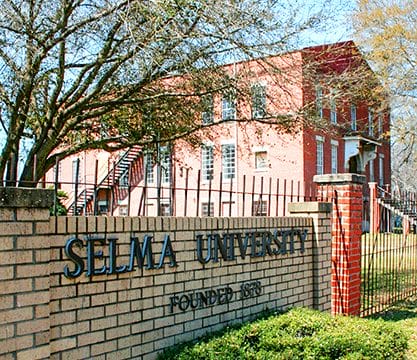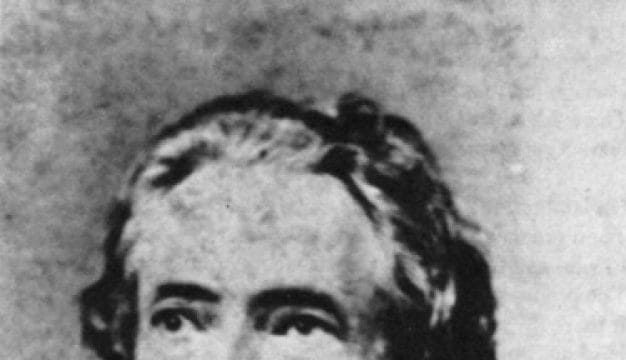Charles Eugene Shannon
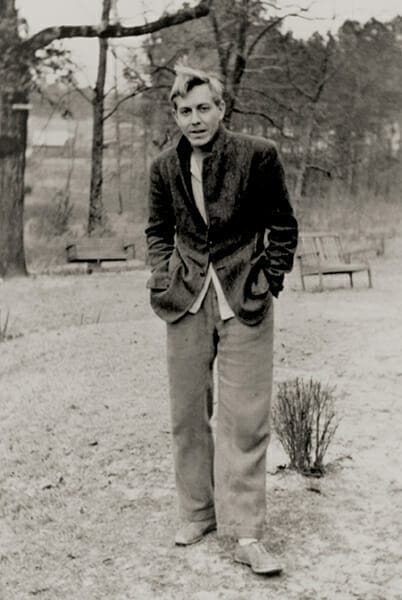 Charles Eugene Shannon, 1938
Charles Eugene Shannon (1914-1996) was a mid- to late-twentieth century American expressionist painter, art instructor, and photographer. He is also remembered for his role in establishing the New South art collective and the Department of Fine Arts at Auburn University Montgomery (AUM) and for preserving and promoting the works of self-taught Black artist Bill Traylor. Shannon was inspired by the lush natural beauty of the American Southeast and his relationships with its varied communities.
Charles Eugene Shannon, 1938
Charles Eugene Shannon (1914-1996) was a mid- to late-twentieth century American expressionist painter, art instructor, and photographer. He is also remembered for his role in establishing the New South art collective and the Department of Fine Arts at Auburn University Montgomery (AUM) and for preserving and promoting the works of self-taught Black artist Bill Traylor. Shannon was inspired by the lush natural beauty of the American Southeast and his relationships with its varied communities.
Charles Shannon was born on June 22, 1914, in Montgomery, Montgomery County, the son of Claudius Eugene Shannon and Charlotte Euphemia Bonnar Shannon. He had one sibling, an older brother, John Bonner Shannon. Charles Shannon’s childhood summers were spent in Ashtabula, Ohio, on Lake Erie with his mother’s family. He also attended his first three years of grammar school in Ashtabula. After graduating from high school at age 15 in Atlanta, Shannon attended Emory University there for two years and the Cleveland School of Art in Cleveland, for four years, the last three on scholarship.
Returning to Alabama the summer of his junior year, he built a log-cabin studio with the proceeds from his first portrait commission on land donated to him by his uncle in Searcy, Butler County. Shannon worked with two young Black men to build the cabin and in the process began to appreciate the day-to-day activities and lives of the Black community in that area. Inspired by the experiences of the summer, Shannon returned to the Cleveland School of Art for his senior year. Upon graduation, Shannon earned the school’s Agnes Gund Memorial Traveling Award, which enabled him to spend two months in Mexico, where he was particularly interested in studying the murals of José Orozco and the paintings of Rufino Tamayo. After traveling in Mexico, Shannon returned to Montgomery in the fall of 1936 and rented studio space there.
 Sunflowers
In January 1937, Shannon’s first solo exhibition, Charles Shannon, was held at the Montgomery Museum of Fine Arts (MMFA). In January 1938, the exhibition Charles Shannon, Paintings and Drawings was shown at the Cleveland School of Art Gallery. That April, Shannon became the first white artist to receive a Julius Rosenwald Fellowship, which was awarded to southerners devoting themselves to rectifying problems specific to the South. It was renewed the following year. In May, Charles Shannon, Paintings of the South opened at the prestigious Jacques Seligman and Company’s gallery in New York City to favorable reviews. That fall, Shannon conceived of a plan to create an art center in Montgomery for people interested in contemporary art to share ideas and support each other’s efforts to foster the arts in the Southeast.
Sunflowers
In January 1937, Shannon’s first solo exhibition, Charles Shannon, was held at the Montgomery Museum of Fine Arts (MMFA). In January 1938, the exhibition Charles Shannon, Paintings and Drawings was shown at the Cleveland School of Art Gallery. That April, Shannon became the first white artist to receive a Julius Rosenwald Fellowship, which was awarded to southerners devoting themselves to rectifying problems specific to the South. It was renewed the following year. In May, Charles Shannon, Paintings of the South opened at the prestigious Jacques Seligman and Company’s gallery in New York City to favorable reviews. That fall, Shannon conceived of a plan to create an art center in Montgomery for people interested in contemporary art to share ideas and support each other’s efforts to foster the arts in the Southeast.
In December 1938, Shannon initiated the first documented meeting with a small number of writer and musician friends to organize the New South art center. New South is remembered for the quality and breadth of the programs it produced. The most significant was the first exhibition of the work of Lowndes County native Bill Traylor, who later received international acclaim. Also noteworthy were exhibitions of paintings by artists who worked in the Social Realist tradition. The Social Realism movement was an egalitarian effort to portray through the arts the hard realities of life in the Great Depression. Shannon was an instructor of weekend beginner and advanced drawing and painting classes at the center, but he did not have an exhibition of his work there. After the outbreak of World War II in Europe, New South could not be sustained because it was dependent on a volunteer staff and its young men had to register for the draft. New South closed in March 1940.
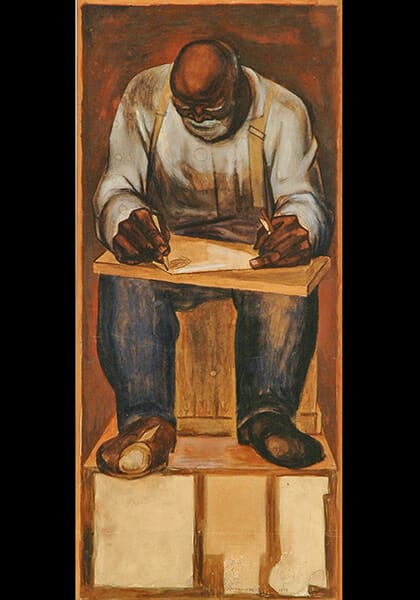 Bill Traylor
In February 1939, Shannon’s painting The Lover was exhibited in San Francisco at the Golden Gate International Exposition, a World’s Fair, where it was awarded third prize in the unrestricted international division. In June of that same year, Shannon met self-taught artist Bill Traylor by chance for the first time in downtown Montgomery. Shannon quickly recognized the importance of Traylor’s work and encouraged him by providing him with art supplies and purchasing his work to protect it. Shannon also was instrumental in establishing Traylor’s place in twentieth century art.
Bill Traylor
In February 1939, Shannon’s painting The Lover was exhibited in San Francisco at the Golden Gate International Exposition, a World’s Fair, where it was awarded third prize in the unrestricted international division. In June of that same year, Shannon met self-taught artist Bill Traylor by chance for the first time in downtown Montgomery. Shannon quickly recognized the importance of Traylor’s work and encouraged him by providing him with art supplies and purchasing his work to protect it. Shannon also was instrumental in establishing Traylor’s place in twentieth century art.
In January 1940, Shannon was selected to be a member of the Experimental Rural Education Program, a cooperative project between West Georgia College and the Carroll County Board of Education with support from the Julius Rosenwald Fund and based at West Georgia College in Carrollton. Shannon was given the position of artist-in-residence and provided with studio space. During this time, his paintings continued to be shown in national invitational exhibitions, and he often went to Montgomery on weekends to see Traylor and help at the New South art center until it closed.
On June 12, 1942, Shannon was inducted into the U.S. Army. After 14 weeks of training as a combat engineer, he was assigned to the mural project at Fort Belvoir in Virginia. His mural, Convalescence, was created for the post hospital. In October 1943, his final sketches for Convalescence were exhibited in the Back the Attack art show and in the Outdoor Art Fair, funded partially by the National Gallery of Art in Washington, D.C.
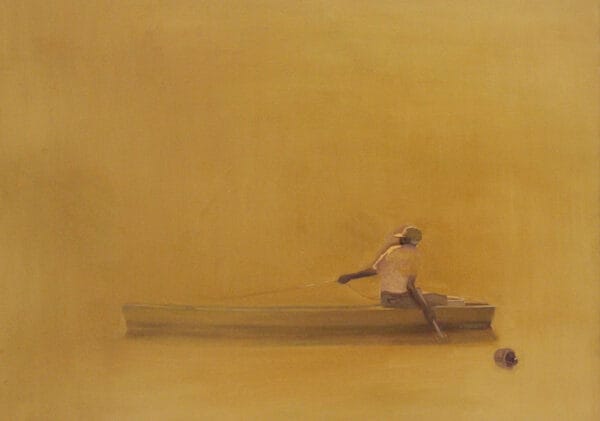 Johnny
Shannon received orders in April 1943 to join the War Department’s South Pacific War Art Unit with civilian artists Howard Cook and Aaron Bohrod. By the end of June, they were accompanying troops in the invasion of Rendova Island during the Solomon Islands Campaign. Upon returning to New Caledonia, the trio learned that Congress had terminated the War Art Unit, and Shannon returned to the United States. While on leave in Montgomery, Shannon married fellow New South member Blanche Balzer. In 1944, he was assigned to the newly formed Art Unit within the Information and Educational Division of the Army Service Forces, based in New York City. Shannon served as a picture editor and illustrator for the GI Roundtable Series, a set of pamphlets produced by the War Department and the American Historical Association. The pamphlets were made available to discussion group leaders in all branches of the U.S. military and the Voice of America radio station. Five months after the war ended, Shannon was honorably discharged. In January 1946, Shannon returned to Montgomery, where he resumed painting portraits and teaching. He taught art classes at the University of Alabama Montgomery Center, which would later become Auburn University at Montgomery. In 1969, Shannon created the art department at AUM. He was named professor in 1974 and retired from AUM in 1979.
Johnny
Shannon received orders in April 1943 to join the War Department’s South Pacific War Art Unit with civilian artists Howard Cook and Aaron Bohrod. By the end of June, they were accompanying troops in the invasion of Rendova Island during the Solomon Islands Campaign. Upon returning to New Caledonia, the trio learned that Congress had terminated the War Art Unit, and Shannon returned to the United States. While on leave in Montgomery, Shannon married fellow New South member Blanche Balzer. In 1944, he was assigned to the newly formed Art Unit within the Information and Educational Division of the Army Service Forces, based in New York City. Shannon served as a picture editor and illustrator for the GI Roundtable Series, a set of pamphlets produced by the War Department and the American Historical Association. The pamphlets were made available to discussion group leaders in all branches of the U.S. military and the Voice of America radio station. Five months after the war ended, Shannon was honorably discharged. In January 1946, Shannon returned to Montgomery, where he resumed painting portraits and teaching. He taught art classes at the University of Alabama Montgomery Center, which would later become Auburn University at Montgomery. In 1969, Shannon created the art department at AUM. He was named professor in 1974 and retired from AUM in 1979.
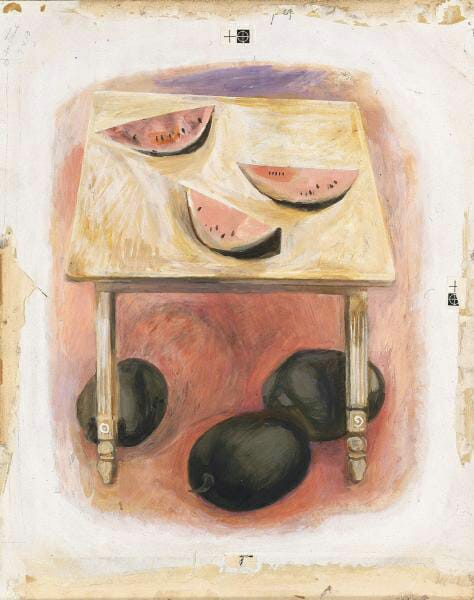 Alabama
In 1947, Shannon produced the painting Alabama for the Container Corporation of America’s United States series, which commissioned artists to create a painting of their native state for ads in national magazines. In September 1950, Shannon served on the regional jury for the Metropolitan Museum of Art exhibition American Painting Today, in which his painting Sweet Lucy Alley was exhibited. After this exhibition, Shannon chose not to exhibit his work nationally until 1974 because of the dominance of abstract expressionism in the world of art. He believed that he did not have work appropriate for national exhibition during this period.
Alabama
In 1947, Shannon produced the painting Alabama for the Container Corporation of America’s United States series, which commissioned artists to create a painting of their native state for ads in national magazines. In September 1950, Shannon served on the regional jury for the Metropolitan Museum of Art exhibition American Painting Today, in which his painting Sweet Lucy Alley was exhibited. After this exhibition, Shannon chose not to exhibit his work nationally until 1974 because of the dominance of abstract expressionism in the world of art. He believed that he did not have work appropriate for national exhibition during this period.
In the 1950s and 1960s, Shannon’s work was characterized by experimentation in style and method. Most notable, perhaps, were his paintings done with Japanese and other papers primed with various glues to alter their absorbency and painted with different kinds of watercolors to achieve certain textural qualities. Subtle colors and the materials themselves were integral to Shannon intended statement with the works.
 Three Men with Dogs
In May 1966, after a divorce from his first wife, Shannon married Eugenia (Gina) Stovall Carter in Prince George’s County, Maryland. She was a former student and the mother of three young children. Beginning in this period, Shannon’s work became dominated by luminous inspirations from the unique light in the South, with its warm haze in summer and its long shadows and crisp sunshine in fall and winter. The shape of the shadows became as important to the composition as the images themselves. The images were realistic but in a looser, more relaxed style. Shannon’s compositions became more spacious, imparting a feeling of great serenity.
Three Men with Dogs
In May 1966, after a divorce from his first wife, Shannon married Eugenia (Gina) Stovall Carter in Prince George’s County, Maryland. She was a former student and the mother of three young children. Beginning in this period, Shannon’s work became dominated by luminous inspirations from the unique light in the South, with its warm haze in summer and its long shadows and crisp sunshine in fall and winter. The shape of the shadows became as important to the composition as the images themselves. The images were realistic but in a looser, more relaxed style. Shannon’s compositions became more spacious, imparting a feeling of great serenity.
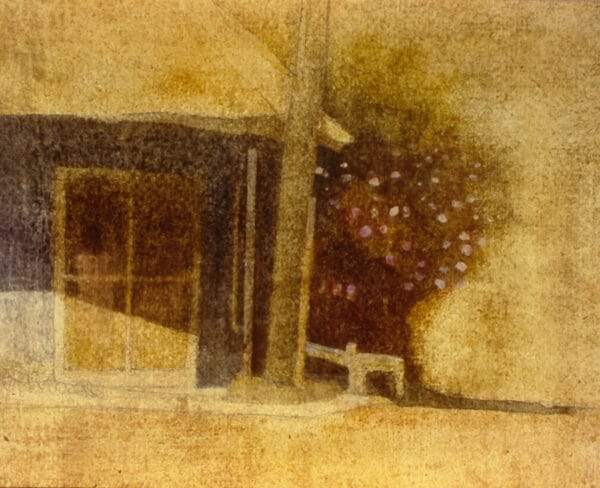 Blue Store, Pink Blush
By the 1970s, Shannon was experimenting with a new painting technique that he called “linens.” The paintings he created with this technique were produced on lightweight unstretched linen primed with different types of gesso, a white binder that contains chalk and other materials. The paint usually consisted of dry pigment suspended in egg and water or an egg-oil emulsion, although he also used acrylics and other water-soluble tube paints. During this time, Shannon continued to paint in oils and acrylics on stretched canvas and also draw with pencils, pastels, and ink pens.
Blue Store, Pink Blush
By the 1970s, Shannon was experimenting with a new painting technique that he called “linens.” The paintings he created with this technique were produced on lightweight unstretched linen primed with different types of gesso, a white binder that contains chalk and other materials. The paint usually consisted of dry pigment suspended in egg and water or an egg-oil emulsion, although he also used acrylics and other water-soluble tube paints. During this time, Shannon continued to paint in oils and acrylics on stretched canvas and also draw with pencils, pastels, and ink pens.
 Charles Shannon, 1974
In 1974, Shannon began exhibiting his work publicly again after his painting Two Boys Fishing, a “linen,” was shown at the National Small Painting Exhibition in Hadley, Pennsylvania. On November 9, 1978, The Back Forty, 1938-1978, an exhibition that spanned Shannon’s 40-year career as a professional artist, was held for one night at the Montgomery Civic Center, presented by art consultant Sue Wiggins. On May 6, 1981, the retrospective Charles Shannon Painting and Drawing opened at the Southeastern Center for Contemporary Art in Winston-Salem, North Carolina, and traveled to five other major southern museums. During the early 1980s and early 1990s, Shannon’s paintings and drawings continued to be shown in regional and national exhibitions. In February 1995, Shannon gifted some of his World War II paintings, drawings, photographs, and documents to Brown University’s Anne S. K. Brown Military Collection in Providence, Rhode Island, at the request of the curator. Following an eight-year battle with cancer, Shannon died on April 5, 1996, at his home in Montgomery.
Charles Shannon, 1974
In 1974, Shannon began exhibiting his work publicly again after his painting Two Boys Fishing, a “linen,” was shown at the National Small Painting Exhibition in Hadley, Pennsylvania. On November 9, 1978, The Back Forty, 1938-1978, an exhibition that spanned Shannon’s 40-year career as a professional artist, was held for one night at the Montgomery Civic Center, presented by art consultant Sue Wiggins. On May 6, 1981, the retrospective Charles Shannon Painting and Drawing opened at the Southeastern Center for Contemporary Art in Winston-Salem, North Carolina, and traveled to five other major southern museums. During the early 1980s and early 1990s, Shannon’s paintings and drawings continued to be shown in regional and national exhibitions. In February 1995, Shannon gifted some of his World War II paintings, drawings, photographs, and documents to Brown University’s Anne S. K. Brown Military Collection in Providence, Rhode Island, at the request of the curator. Following an eight-year battle with cancer, Shannon died on April 5, 1996, at his home in Montgomery.
In November 1998, 36 Shannon photographs were included in the Bill Traylor 1854-1949, Deep Blues exhibition at the Museum of Fine Arts Bern in Switzerland and the Museum Ludwig in Cologne, Germany. These works featured his 1939 Monroe Street area photographs of Traylor and the vibrant Black commercial area of segregated downtown Montgomery. They were recognized as an important part of Shannon’s artistic legacy. On November 14, 2019, the Charles Shannon exhibition opened at the MMFA in conjunction with the museum’s celebration of the bicentennials of the state of Alabama and of Montgomery and the Bearing Witness: Art in Alabama symposium. It was sponsored by the Alabama Humanities Foundation (present-day Alabama Humanities Alliance) and the Alabama State Council on the Arts and was a “signature event” of the Alabama Bicentennial.
Paintings by Charles Shannon are held at the MMFA, the Georgia Museum of Art, the Anne S. K. Brown Military Collection, and the Army Center for Military History, Fort Belvoir, Virginia. In addition, Brown University has a collection of Shannon’s World War II South Pacific war photographs. The Monroe Street photographs remain in a private collection but are reproduced in the catalogue Deep Blues/Bill Traylor (1854-1949) by Josef Helfenstein and Roman Kurzmeyer.
Further Reading
- Ausfeld, Margaret Lynne. Bill Traylor Drawings from the Collections of the High Museum of Art and the Montgomery Museum of Fine Arts. Atlanta and Germany: High Museum and DelMonico Books, 2012.
- Chambers, Bruce W. Art and Artist of the South, The Robert P. Coggins Collection. Columbia: University of South Carolina Press, 1984.
- Helfenstein, Josef, and Roman Kurzmeyer. Deep Blues/Bill Traylor (1854-1949). New Haven: Yale University Press, 1999.
